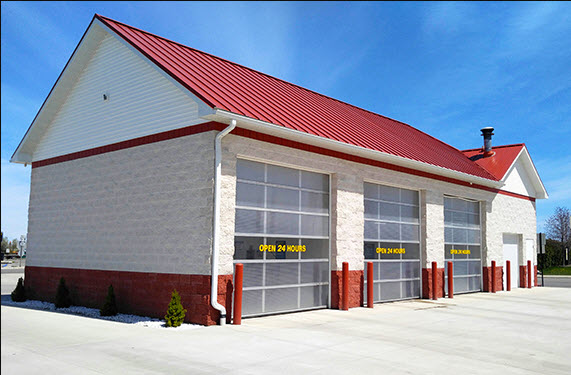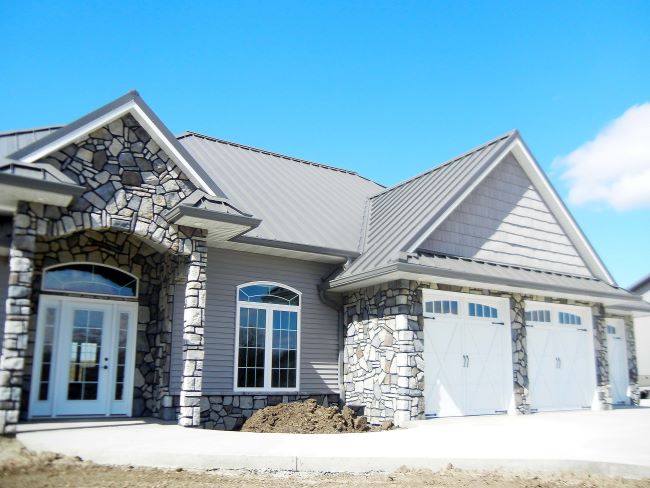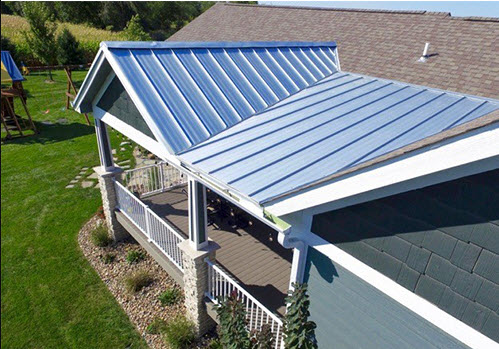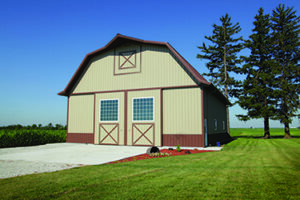One major benefit of building with metal is its unparalleled versatility. In addition to its durability and longevity, mixing metal panels into building designs can update the appearance of any structure. Available in a variety of textures, shapes, finishes and colors, the design possibilities and flexibility afforded to designers, architects, contractors and homeowners are endless. These panels are a durable option which offers a lengthier life span than several other materials.
Mixing Metal Panels with Traditional Materials
To add contrast and texture metal panels seamlessly pair with traditional building materials like shingles, wood shake and siding, stone and others. Metal panels can be used to modernize the exterior of any structure. From residential buildings to restaurants, commercial buildings, car washes and shopping centers, there are several ways to integrate metal within the design of a building:
- Mix metal roofing panels with brick, stone or wood for added durability:


- Add an eye-catching exterior accent wall to mix metal wall panels into your design.
- Thinking about creating an attached porch or carport? Metal panels can easily integrate with shingles or other traditional roofing materials.

When mixing metal panels with other building materials it’s important to hire an experienced contractor and refer to the specific product manuals for installation.
This will help ensure the transition from the original material to metal panels is seamless. In addition to correctly trimming the metal panels to prevent ice and snow dams, they can also help ensure trim pieces are flashed beneath the existing shingles, so you can easily replace your existing roof in the future, if necessary.
Mixing Metal Panels
Another option for creating contrast within the design of your metal building is to utilize different metal panel profiles. There’s no limit to the number of panels you can combine to bring your vision to life. Try one panel profile on your roof and add another wall panel for the siding. You can also mix and match panel colors to add character to the exterior of your building.
With this approach, you can enjoy the lengthy lifespan of metal building materials without sacrificing the aesthetic appeal you desire. Mix metal panels on buildings for any application including residential buildings such as homes, agricultural facilities and hobby shops, as well as commercial buildings like workshops, restaurants and auto repair shops.

Metal Panel Manufacturer Support
Many metal panel manufacturers offer a metal roof and wall panel profiles to support a variety of unique building projects. These high-quality panels come in a variety of styles, colors and finishes to fit any design. Browse our panel profiles as well as our project gallery to explore different applications for each of our products.
In addition to delivering high-quality products, we pride ourselves in providing excellent customer service throughout the duration of your project. Contact an experienced ABC representative for more details on mixing metal panels into your customers’ project.








